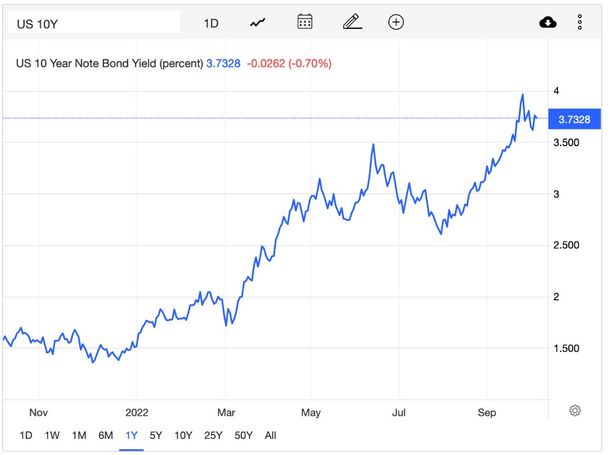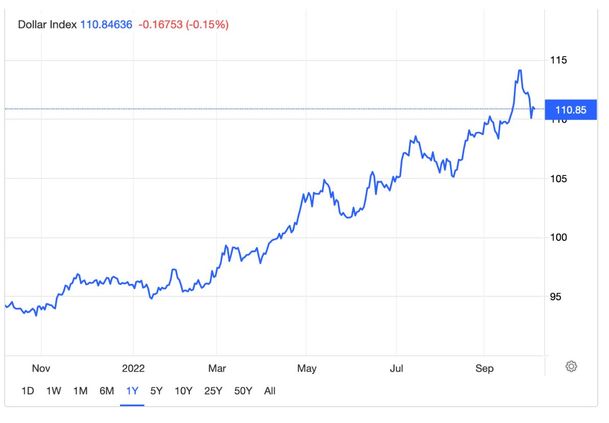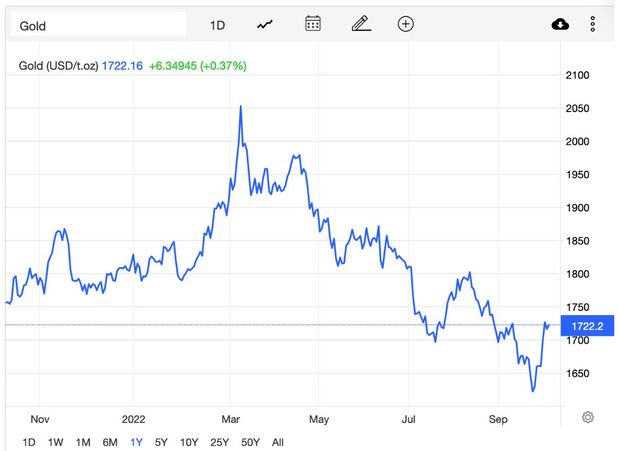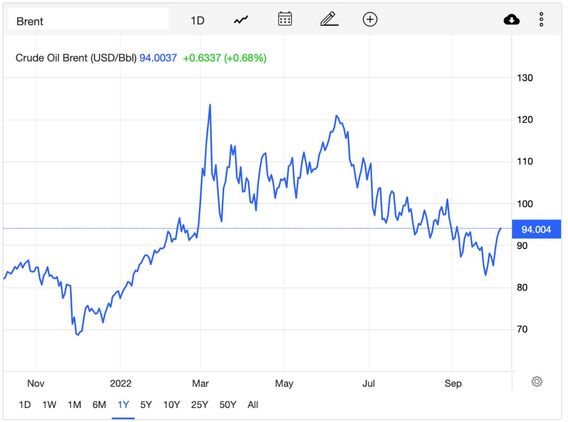Since the beginning of this week, risk appetite in global markets has suddenly opened up. The partly bad data announced in the US was compounded by statements from the United Nations and the IMF recommending that the Fed slow monetary tightening. Financial markets, caught in the dollar tide as interest rates rose and looking for a branch to hold on to, immediately gave a premium to the scenario that the Fed will slow down.
➔ As a result, the opposing trends of the last three quarters came to the fore within three days.
➔ In addition to geopolitical risks and other developments, one of the main reasons for the downturn on the financial markets was the rise in US interest rates.
➔ The US interest rate, which started at 0.25 percent with 25 basis points on March 16, has remained at 75 basis points in the last three sessions and has risen to 3.25 percent.
➔ The average Fed chairmen’s forecast is for interest rate spreads to rise to 4.4-4.6 percent by the end of the year.
THESE ARE THE EARTHQUAKE AFTERSHOCKS
➔ While US 10-year bond yields, on which the world is based, started the year at 1.512 percent, they rose to 2.192 percent on March 16 and 4.019 percent on September 28.
➔ 10-year rates fell as much as 3.562 percent over the past three days, closing from 3.753 percent yesterday and rising to 83 percent from March 16, when rate hikes began. 10-year rates, which fell 11 percent after that exit, eventually rebounded 5 percent.
➔ Concurrent with the heightened risk appetite in October, US interest rates fell sharply while the dollar experienced a similar situation.
➔ Measures the value of the dollar against big money The dollar index gained 16.6 percent from March 16 to September 28 and then fell 4.3 percent. The dollar index, which rose to 114,745 on Sept. 28, recovered slightly by 1.1 percent after falling as low as 109,838 yesterday.
➔ Because the economic data released yesterday was good and Wall Street interpreted it as bad with its trend in the last experiment and risk appetite started to shrink again.
➔ A similar development was observed for the price of gold. Gold prices, which are inversely correlated with US interest rates, have seen a serious decline of late.
➔ Gold, which was $1,928 an ounce on March 16th when the rate hike started, fell to $1,614 on September 28th. After that 16 percent drop, gold, which rose to $1716 yesterday, gained 6 percent.
➔ The high volatility in the markets after September 28 is actually a consequence and aftershock of the previous interest rate and dollar earthquake. It’s not a new trend.
WHAT IS THE FED STOPPING?
➔ Because geopolitical developments are not changing.
➔ There is only one development that will prevent the Fed, which is late on inflation and just gaining credibility, from raising interest rates and tightening monetary policy. That’s falling inflation.
➔ As such, September US inflation next week has some significance, but even if a single month’s data is low, it does not reflect trend.
➔ It is also winter and one of the main reasons for high inflation is high energy prices. Let’s spend a winter with these prices, let’s see where inflation sits.
➔ From the Fed’s perspective, the low September inflation should only have an impact on whether it hikes rates by 75 points or 50 basis points at the next meeting.
➔ The Fed uses the inflation findings and data for the following months to check the level at which it will stop raising interest rates.
OIL PRICE INTERVENTION
➔ The course of inflation in the US is influenced by the price of oil, and the supply-demand balance affects the price of oil.
➔ Rate hikes, accelerated by rising inflation, slowed the pace of economies and fueled recession expectations. This has led to a significant drop in oil prices in recent months.
➔ The price of Brent oil fell from 126 dollars to 83 dollars and finally rose to 94 dollars.
➔ OPEC, the Organization of Petroleum Exporting Countries, decided at yesterday’s meeting to cut daily production by 2 million barrels in order to increase the falling oil price. It is stated that the actual limit will be capped at just 800,000 barrels. This equates to almost 1% of the world’s daily oil consumption.
➔ It was not for nothing that US President Biden showed anger. Because oil and energy prices will affect the presidential election.
➔ In fact, oil prices rose 10 percent in three days on the news of supply cuts. and it came out to $94. OPEC’s goal of raising prices to around $100 has been partially achieved for the time being.
OPEC AND CENTRAL BANKS AGAIN
➔ At a time of accelerating global inflation, oil exporters don’t want to lose their goods cheaply and make some money.
➔ But the global economy is also slowing down rapidly. The US is already self-sufficient in oil. A recession is expected in Europe. The Chinese economy will also show a growth rate of less than 5 percent after 40 years.
➔ According to the World Trade Organization, world trade growth, which rose to 9.7 percent last year, will slow to 3.5 percent this year. World trade is losing momentum and will remain at the level of 1 percent next year.
➔ At a time when some economies are slipping into recession and average global growth is declining, it is difficult to increase oil consumption, but the most it can do is decrease.
➔ In this respect, oil-exporting countries are trying to slow down the decline in oil prices by deciding to cut production.
➔ actually The aftershocks of the interest rate and dollar tremors are affecting this oil decline and price collapse that prompted OPEC to make a decision.
➔ Fighting inflation primarily requires controlling energy prices. If the oil price is reduced, the first profit in the fight against inflation will be made.
➔ In this sense, OPEC’s price increase decision complicates the fight against inflation and the work of the central banks.
#interest #rate #dollar #gold #volatility




No comments:
Post a Comment